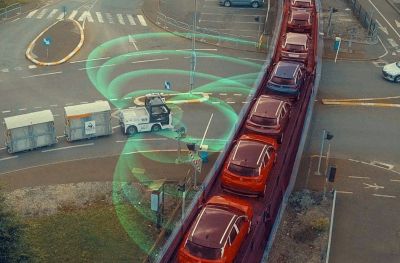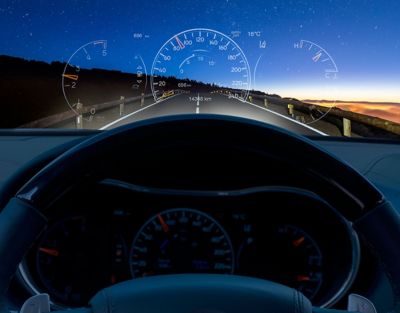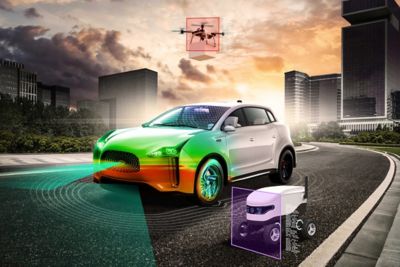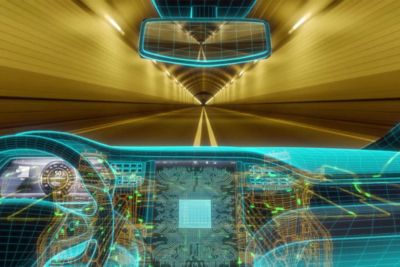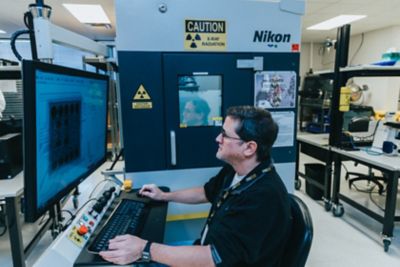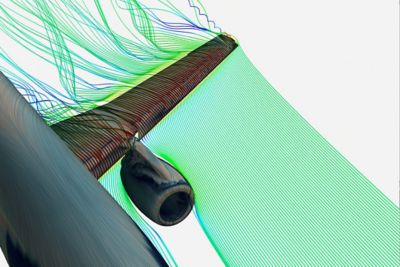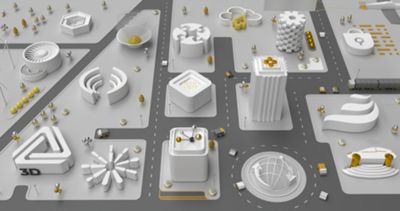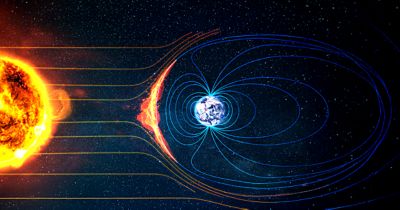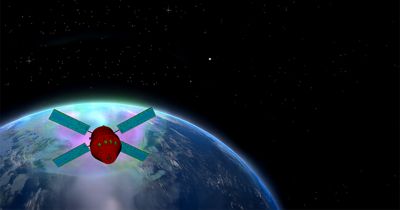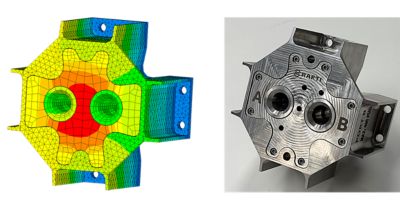A vessel created from ores found deep beneath Earth’s crust hurtles away from its creators at 17,000 mph through low Earth orbit (LEO). While LEO was once a clear expanse of space surrounding Earth, this environment is becoming increasingly crowded with both active satellite missions and space debris. This debris ranges from discarded upper stages of launch vehicles and retired satellites to wreckage from accidental collisions.
According to Space-Track.org, approximately 11,000 active payloads and 17,700 analyst objects are currently in orbit around us. As for space debris, that number is more challenging to pinpoint. Space-Track.org, for example, approximates 19,000 pieces of debris in our orbit while the NASA Office of Safety and Mission Assurance (OSMA) estimates that there are over 21,000 pieces of orbital debris larger than 10 centimeters in existence. LEO also contains a large amount of debris that is too small to be tracked but can still cause great damage upon collision with a spacecraft.
No matter the specific number, the fact that space debris will continue to pose a significant obstacle for the space industry remains true. “Space debris is challenging because of the sheer scale of the problem,” says Alex Lam, application engineer II at Ansys. “LEO, defined by NASA’s Commercial Space program as the region of space between 100 km and 2,000 km above Earth’s surface, encompasses over 1 trillion cubic kilometers in volume. Detecting and tracking a speck of space debris in such an enormous volume is akin to finding a needle in a haystack the size of the Earth. Plus, the needle just happens to be traveling at 17,000 mph.” Finding these metaphorical needles will become increasingly challenging as the number of debris and satellites in LEO rises.
Looking ahead, the overarching consequences of this crowded environment may even become catastrophic. In the 1970s, NASA scientist Donald Kessler proposed what is now referred to as Kessler Syndrome. This infamous theory predicts that a chain reaction could happen in space where two colliding objects would produce debris that would then collide with other orbiting objects, creating even more space debris. This scenario could cascade throughout LEO, possibly creating a near-impassable “debris belt” around Earth composed of the dangerous debris of former spacecraft, which would impede future space missions.
While we have not reached a world in which Kessler Syndrome has actualized, this grim prediction emphasizes the urgency of avoiding collisions in space. However, this is no easy task.
Matter in orbit around Earth moves very quickly and often in unrestrained trajectories; even a small piece of debris, such as a tiny paint fleck, could set off this syndrome, harming our ability to perform space missions. Maintaining a collision-free trajectory, however, comes with its own set of challenges. Engineers also need to prioritize fuel conservation and avoid communications delays between spacecraft and Earth-bound communication centers, which would reduce our ability to react quickly to obstacles. These obstacles will only be compounded as Earth’s finite orbits become increasingly crowded.
So, how is the space industry dealing with these challenges?
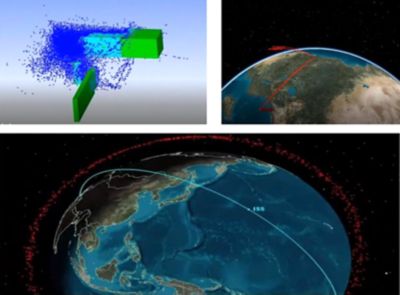
Simulation examples showing the modeling of debris impact in space and tracing the trajectory of the fragments after impact to avoid collisions with other satellites
The Technology Used To Avoid and Manage Collisions in Space
Let’s return to our example of a spacecraft navigating the increasingly cluttered environment of LEO, where most human-made satellites and space debris are located.
While the spacecraft’s path can be planned using existing safe operations protocols and standards (such as the “NASA Spacecraft Conjunction Assessment and Collision Avoidance Best Practices Handbook”), guides cannot answer every question or scenario that a spacecraft operator may have. Static guides will also not remain up to date on the locations of debris and satellites. To help fill in these knowledge gaps, operators need constant updates on best practices and the positions of satellites and space debris. Then, they must determine their best course of action to avoid collisions with these objects.
To achieve these goals, spacecraft operators can turn to space situational awareness (SSA) and space domain awareness (SDA). Put simply, spacecraft operators:
- Use SSA to track objects and their operational environment to achieve advance warning and perform collision avoidance maneuvers (CAMs)
- Use SDA to build upon SSA and characterize the intent of space objects to better avoid them
To function properly, both SSA and SDA require the use of advanced tracking systems, accurate data, predictive algorithms, and data integration tools.
The use of SSA and SDA technologies is on the rise. Lam shared how the responsibility for SSA in the U.S. is shifting from U.S. Space Command to the Department of Commerce, “which I believe recognizes the value of commercial space and more open data sharing beyond conventional defense purposes,” he says. There’s also growing interest in the commercial value of the SSA industry and even a recognition of the need to expand SSA and SDA beyond conventional Earth orbits.
While SSA and SDA are instrumental technologies in the future of space, they are not the only technologies required. For instance, what happens if a spacecraft needs to be refueled while in orbit? This scenario necessitates an ability for in-orbit maneuverability and servicing.
One way that operators can refuel a spacecraft operating hundreds of miles above Earth’s surface is through in-space servicing, maneuverability, and manufacturing (ISAM), which extends the mission lifetime of spacecraft by allowing them to repair, replace, or upgrade parts; remove debris; and refuel. As part of ISAM, a spacecraft may need to perform a rendezvous and proximity operation (RPO) to further enable repositioning, docking, repairing, refueling, or other mission-extending activities. One example of this technology would be “companies like Astroscale advertising active debris removal and performing RPO for mission extension of in-situ inspection,” says Lam.
While these relatively newer and emerging technologies are essential components of a spacecraft operator’s toolbox, they are imperfect. Common challenges include:
- Finding software with enough sophistication to enable the navigation of a complex orbital domain while delivering operational flexibility
- Developing appropriately robust, low-latency, and accurate tracking systems, predictive algorithms, and data integration tools
- Accurately combining data from disparate sources
- Developing innovative and reliable technologies, such as autonomous technologies for ISAM and RPO
- Improving spacecraft designs to minimize debris creation from launch through the end-of-life deorbiting process
- Developing innovative debris removal technologies
- Building widely accepted and comprehensive international regulations, policies, and accepted standards for space debris
Addressing these challenges will have an immense impact on improving mission success rates. As a result, engineers are turning to Ansys simulation software to achieve this and solve some of the pressing issues in this sector.
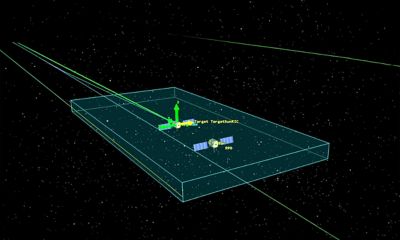
Simulation analysis of rendezvous and proximity operation (RPO) support
Enhanced Obstacle Avoidance via Ansys Simulation Software
SSA and SDA are cornerstones of a successful space mission, and Ansys simulation software has been developed to help engineers perform these analyses effectively, enhancing their ability to minimize collision risk.
For instance, Ansys technology can be used to evaluate potential SSA system designs before the construction stage even begins. According to Lam, this includes using the Ansys Optical portfolio “to design lenses, mirrors, and detectors that maximize the capability of a given system” and the Ansys Electromagnetics portfolio “to design antennas, develop beamforming strategies, and characterize expected performance against debris with different shapes and sizes.” These simulation tools can also be used to generate training data for artificial intelligence/machine learning (AI/ ML) algorithms before the system is deployed.
As for deployed SSA and SDA systems, engineers and operators can use Ansys Orbit Determination Tool Kit (ODTK) orbital measurement processing software to process incoming measurements for cooperative and uncooperative objects in order to produce an ephemeris that has a realistic covariance. Meanwhile, Ansys Systems Tool Kit (STK) digital mission engineering software allows users to determine the collision probability between large catalogs of space objects. If the findings from this analysis indicate that a CAM is required, engineers and operators can plan an optimized maneuver that both maximizes fuel efficiency and minimizes collision risk. In the case of a collision, the Ansys LS-DYNA multiphysics solver can be combined with STK and ODTK software to better understand the resulting debris field and its implications by performing a forensic analysis that reconstructs the collision dynamics. Simulation software can also be used to dynamically analyze and compare potential trajectories and determine an orbit.
As for RPO and ISAM, simulation provides the ability to “try before you fly,” says Lam. “Simulation allows you to mitigate risk and understand exactly how a close approach is going to go before you actually maneuver two very expensive satellites near each other.”
A few of the many ways that engineers can apply simulation to these analyses are by using:
- STK software to plan an RPO maneuver
- Ansys Discovery 3D product simulation software and STK software to create a 3D spacecraft model with functioning solar panels and evaluate how solar panels are shadowed by another spacecraft maneuvering in close proximity
- ODTK software to process tracking measurements during RPO and ISAM when in close proximity
- Ansys Mechanical structural finite element analysis (FEA) software to evaluate contact dynamics for spacecraft that make intentional contact
- Ansys Electronics electromagnetic, signal integrity, thermal, and electromechanical simulation solutions to evaluate how RF communications change in the vicinity of another spacecraft
- Ansys RF Channel Modeler high-fidelity wireless channel modeling software to evaluate inverse synthetic aperture radar (ISAR) imaging of spacecraft in close proximity
- Ansys Speos CAD integrated optical and lighting simulation software to evaluate optical imaging of spacecraft in close proximity
- Ansys Thermal Desktop thermal-centric modeling software to evaluate thermal effects caused by spacecraft shadowing and ensure that all payloads remain within their thermal limits
An Outlook on Collision Avoidance in Space
In regard to SSA and SDA, “we are pushing the capabilities of detecting and tracking objects in space by building more exquisite telescopes and more powerful radars than ever before,” says Lam. “These increasingly complex SSA/SDA systems demand maximum uptime with the highest possible performance.” As for operations involving RPO and ISAM, the room for error will remain extremely low, resulting in demanding workloads for satellite operators who must ensure that all systems perform nominally.
While these technologies grow, simulation will continue to be a necessary tool to “ensure that these new technologies meet their demanding requirements before they ever get fielded, allowing for reduced risk and cost to programs,” says Lam. That’s not all either. Simulation software can also generate training data for AI/ ML algorithms that are used by satellite operators and empower researchers to assess solutions for more exotic orbit regimes where new research is happening now, such as cislunar space.
Protecting the spacecraft in orbit around Earth is imperative not only for the existing services they provide — such as connectivity and resource monitoring — but for the innovative future uses we’ll see in the coming years. To achieve this long-term reliability, SSA, SDA, ISAM, RPO, and other protective technologies must be at the forefront of our journey to the stars.
Learn More
Get a sneak peek of the Ansys space documentary “Simulating Space.”
Just for you. We have some additional resources you may enjoy.
“Simulation allows you to mitigate risk and understand exactly how a close approach is going to go before you actually maneuver two very expensive satellites near each other.”
— Alex Lam, application engineer II, Ansys
